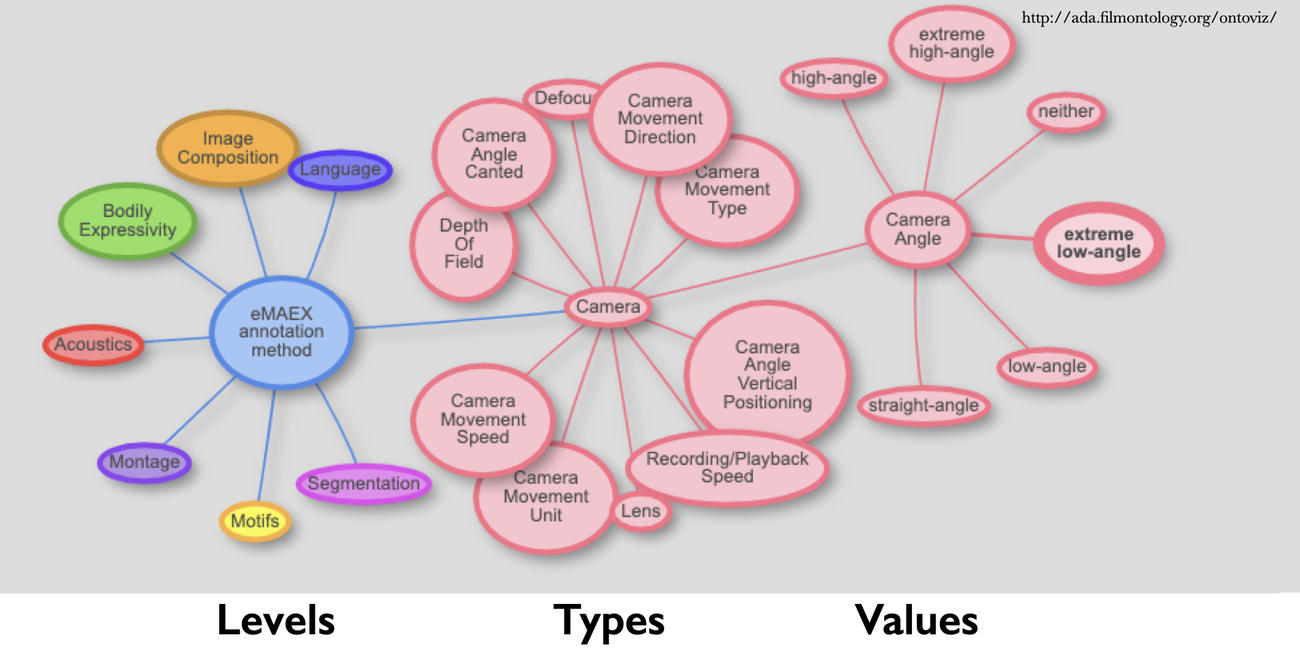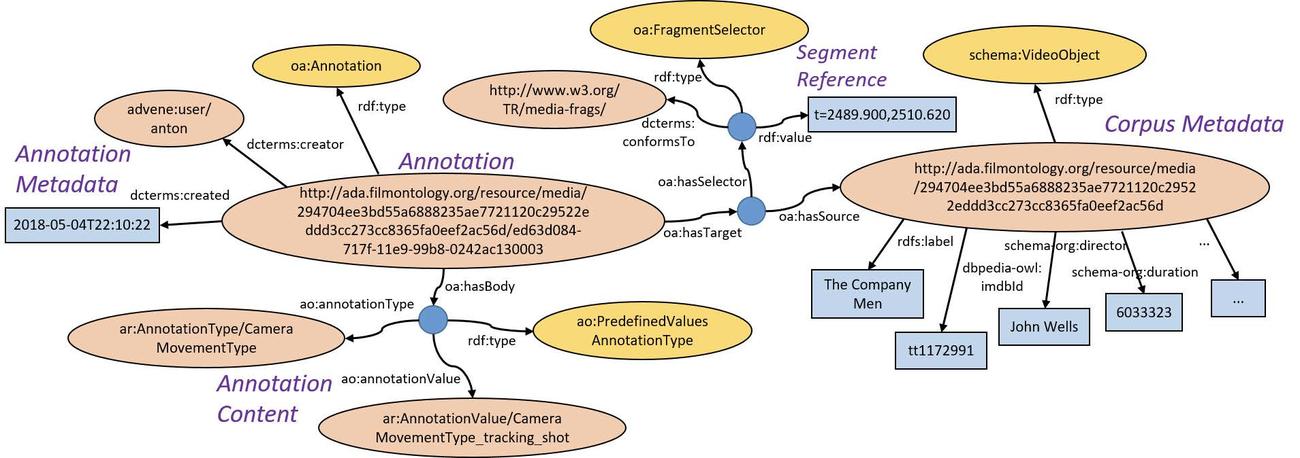Vocabulary of the AdA Filmontology
The AdA Filmontology is a systematic descriptive vocabulary of film-analytical concepts for detailed video annotation. The descriptive vocabulary itself is not necessarily tied to the use of digital tools and can also be used for classical sequence protocols. The concept of the ontology, which stems from computer science, however, refers to the conceptual data model which includes all terminology and their relations. The ontology was created according to the principles of the Semantic Web and is therefore machine-readable as well as compatible with other semantic (meta-)data. The OWL-ontology is the basis for being able to create and publish annotations as Linked Open Data for the exchange and comparison of analytical data. The AdA Filmontology is modular and was developed as a potentially expandable, or rather adaptable system from the beginning.
The vocabulary was developed in close cooperation between film scholars and computer scientists, in order to support digital film studies. The goal is to offer a standardized and systematic way for the joint annotation of audio-visual corpora, in order to make comparable, systematic film analyses possible. The vocabulary thereby leans on basic film-analytical terms which were compiled regarding the analysis of dynamic staging patterns and movement figurations. Its structure is based closely on the dimensions of description in the eMAEX-approach. The structure of the AdA Filmontology is threefold: annotation levels, -types, and -values.
| Annotation levels |
An annotation level is a category that groups a set of similar annotation types (e.g. all types related to camera or all types related to acoustics) |
| Annotation types |
An annotation type refers to a concept of the annotation routine under which a movie is analyzed (e.g. camera movement speed, or dialogue intensity) |
| Annotation values |
An annotation value is a concrete characteristic an annotation type can have (e.g. for camera movement speed – slow, medium, fast, alternating) |
Ontoviz-visualization of the threefold structure of levels, types, and values
Image Credit: AdA Filmontology Visualization
Currently, the AdA Filmontology (v1.8) consists of 8 annotation levels, 78 types, and 501 values. Each level, type, and value is named and defined in English and German. A large part of the types has predefined values, some types aim at free text descriptions.
LodLive-visualization of the threefold structure applied to types of camera movement
Image Credit: see the data model of the ontology: AdA-Github-Website
An example: We annotate the first shot of a film as a tracking shot.
Tracking shot is a value of the type Camera Movement Type, which is assigned to the level Camera. The annotation is tied to the starting and end point of the shot.
This information is stored in machine-readable form in the semantic web standard RDF as relational Linked Open Data: The section between 00:00:10 and 00:00:50 of the video file X which is an instance of film Y (the metadata of which are found in the entries of an external film database) was classified by annotator Z as a Tracking Shot, which is specifically related to other possible values of the type Camera Movement Type. Each concept of the ontology (and each individual annotation) has a unique resource identifier – URI. The data management in the AdA-project thereby entails an annotation structure which goes beyond the use of an annotation software.
Complex relations of Linked Open Data: Example of an annotation of a tracking shot visualized as a RDF-graph
Image Credit: Agt-Rickauer et al. 2022
The annotation software Advene was adapted for the video annotation with the AdA Filmontology and an annotation template was created.
The vocabulary, the template, as well as an annotation manual for the AdA Filmontology are found in the AdA toolkit.


